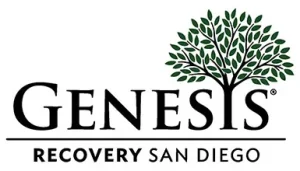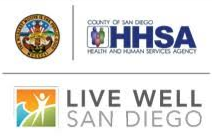“Made a searching and fearless moral inventory of ourselves.”
The 4th step can be a major obstacle in a program of recovery. You may have heard AA or NA members talk about doing the 1-2-3 shuffle. That’s a reference to cycling through the first three steps several times with different sponsors without ever getting to the 4th. Many of us get to this step and feel like it’s too much to handle. We create excuses like not liking our sponsor, feeling like we’re not making progress and that we have to switch it up and start again. Spend any amount of time in the rooms and you’ll hear over and over again how people relapsed on their 4th step.
Step 4 Is Really About Honesty
My sponsor told me that if you break the steps up into groups of three, each one corresponds with honesty, open-mindedness, and willingness. If you do that, step four corresponds with honesty. We’re taking a good, hard look at ourselves and we usually don’t like what we see. In our disease, our actions are out of alignment with our values. This creates all kinds of guilt and shame. I’ve also been told that guilt is feeling bad about things we’ve done and shame is feeling bad about who we are. To me, shame comes from guilt. When our actions are out of sync with our values, we start to define ourselves by those actions and think of ourselves as inherently bad people, forgetting that we have values in the first place. Over time, as guilt and shame pile up, we use and drink more to keep those feelings at bay because we’re afraid of them and don’t know how to face them.
Getting back to honesty, in the 4th step we face our past square in the face and piece together the puzzle of what causes our addiction. The insecurities and fears that were in place before we ever took that first drink or drug. We find out how these feelings grew and manifested in new ways as our disease progressed. The Big Book of AA uses the analogy of a business taking inventory and getting rid of damaged and unsaleable goods. In AA, there are three main sections to the 4th step: resentments, fears, and sexual relations.
1. Resentments
Resentments are referred to as “the number one offender”. We make a list of our resentments, basically people, institutions, and principles we were angry at. For clarification, institutions might include jail or a psychiatric hospital. An example of a principle is “men don’t cry”. Anything is list material, going back as far as we can remember. If Billy or Susie took your lunch money in the second grade and you still have a grudge about it, feeling a stab of anger when you think about it, write it down. It may feel foolish but it’s not about what other people may think. It’s your inventory and your feelings are not insignificant. A piece of advice that was given to me was that you can’t write too much but you can write too little. I wrote about 40 pages of close to 100 resentments. It being your list also means that you don’t place blame upon anyone else for the circumstances of your life. Undoubtedly we have all been wronged in our lives, sometimes very seriously but we’re not taking an inventory of others. The actions of other people are out of our control.
We write down why we were angry, what our part in the situation was, and our character defects like jealousy or duplicity. After we’ve written several resentments down, it gets easier and we start to see how all this anger was really stemming from ourselves. We see that many of the perceived wrongs against us were just that, perception. An expression that I like is that we’ve been allowing other people “to live in our heads, rent-free”. We’re drinking our own poison. I can tell you, it isn’t fun. I spent weeks working on this section and was in a bad mood for most of it. Writing page after page about my misplaced anger and character failings made me feel terrible but it was a necessary step in my recovery. It’s a setup for the relief that comes in step five.
2. Fears
Fear is the next thing to write about. We probably never realized how much fear we had of life. Every area of our lives is affected by different fears. My sponsor gave me a few examples of common ones to get me started. Fear of the unknown, of failure, of being alone. He said when I thought of one on my own, to try and expand on it to see if there was a more overarching fear that encompassed it until I found the root. For example, a fear of sharing at a meeting because people may not like what I say probably stems from a fear of rejection. A friend in treatment asked me if he should write down a fear he had of sharks. With my sponsor’s advice in mind, I told him that his fear could probably be broadened into a fear of bodily injury stemming from a fear of death. I also saw what seemed like paradoxes. Simultaneous fears of success and failure, of being alone and social interaction. I realized that my fears overlapped. Working backward from specific fears helped me to see the big picture and how deeply afraid I was of the world.
3. Sexual Relations
The sex part isn’t just about sexual practices, it’s also about how we have acted in romantic relationships. When we look at all our past relationships individually and collectively, we see patterns of how we treat the people that we have been romantically involved with. These relationships typically involved jealousy, anger, and vindictiveness. Most of my relationships with women had been toxic and unhealthy. The reasons for entering and staying in those relationships were different from case to case but they were usually the wrong reasons. I was much more concerned with taking rather than giving. There were times when I had been treated poorly but my response was never appropriate. I found that most of the time, I had done the hurting and caused most of the pain. Not just to them but to myself as well. Even when I did have good intentions, I set myself up to be hurt. Unrealistic expectations and self-centeredness caused me to be hurt over and over again.
Step 4 in NA
The NA 4th step has the additional sections of feelings, abuse, and assets. If you thoroughly work this step, it doesn’t matter which way you are going about it. Honesty with yourself is what matters and the benefits of working the 4th step outweigh the pain and discomfort it causes when writing it. With a better understanding of the root causes of your own addiction and your character defects, you can go about working on improving upon them.
Learning From Our Past For A Better Future
A clearer picture of how we have acted in the past and why we behaved like that helps us avoid continuing to do things that go against our true nature. A self-inventory is a learning tool that we frequently revisit as we move forward in recovery. We don’t magically live perfect, error-free lives after completing the 4th step. As humans, we will continue to make mistakes. As addicts and alcoholics, we have to be especially cautious not to fall into our old manner of acting and reacting. We don’t have to be slaves to resentments and fear anymore. Life can be accepted on life’s terms and dealt with accordingly, leading to serenity and contentment.
Interested in learning more about the role of 12 step programs on recovery and how to find one for you or a loved one? Genesis Recovery has established alliances with fellowships throughout San Diego County and can help. Call us today at 619-717-7319.

